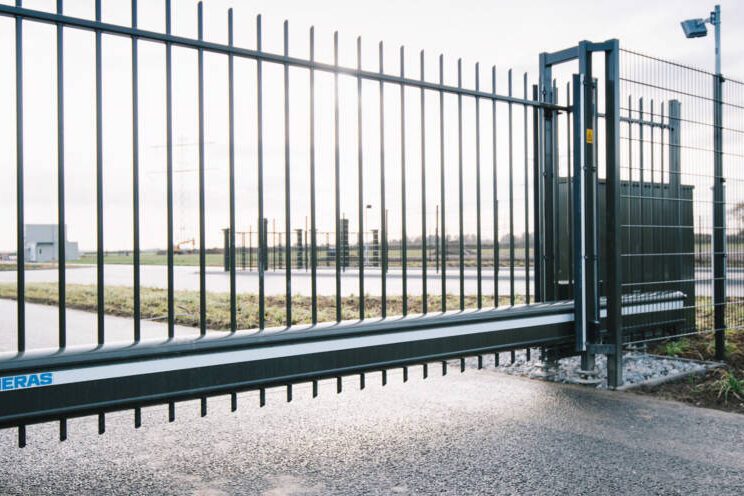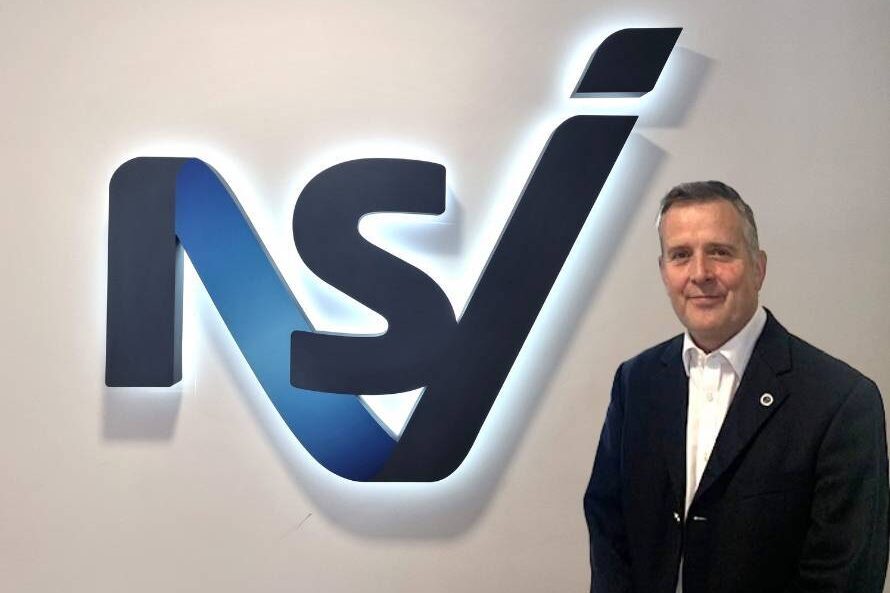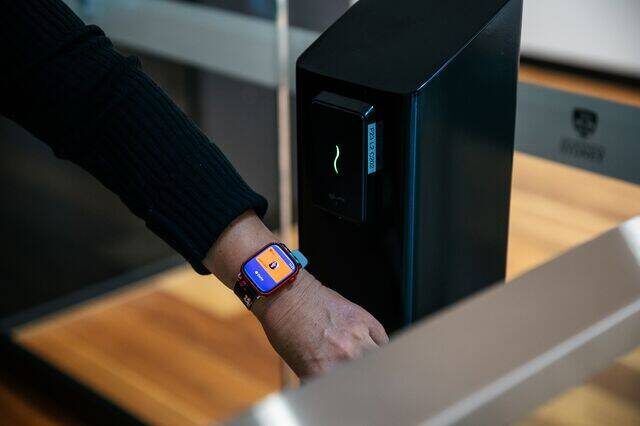Why is mmWave called “wireless fibre?”
A huge amount of either lightly-licensed or license-exempt spectrum and plenty of wide non-overlapping channels enable reliable multi gigabit capacity with mmWave systems. Pencil-beam antennas, together with high free-space-loss ensure extraordinary spatial isolation, and guarantee interference-free performance. For more information, please refer to Siklu’s blog post:
Why everything you knew about wireless before millimetre waves is wrong
What is the difference between 5G and Siklu mmWave?
5G in its strictest sense is the standard that is developed by the 3GPP, a consortium of mobile ecosystem vendors that introduced 3G, 4G/LTE and now 5G to the market. In the mobile application it is a must that there be a standard interface between user device (smart phone, tablet etc.) and the network base stations (BTS). From a marketing perspective 5G has come to mean gigabit performance.
5G in the 3GPP standardizes the use of “low frequency” mmWaves in the 28 and 38GHz, both licensed bands, not available to all. Siklu 5G operates in higher frequencies and deliver 5G speeds and services, in lightly-licensed or license-exempt spectrum which is readily accessible to most service providers.
How do I choose the right technology for my application: E-band or V-band?
Despite the fact that both bands are millimetre wave bands, there are several differences between them including: form factor, range, regulation and licensing, installation scenarios etc. The following table summarizes the main differences:
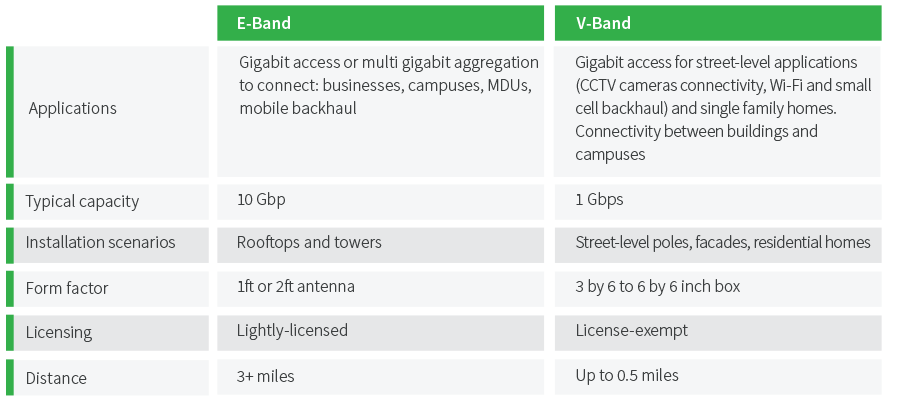
How reliable is the mmWave technology?
The reliability of mmWave technology can be compared to fibre, when the equipment is properly engineered and the radio link designed correctly.
There are several aspects to the reliability:
- Mean Time Between Failures (MTBF) – this term relates to the equipment reliability. Siklu’s products have an unbeatable 90 year MTBF. The radios are based on highly integrated RFICs and ASICs, utilize a small number of components and have low power consumption. The internal design does not include any RF connectors or cables.
- Mean Time to Repair (MTTR) – this term relates to the average time required to repair a failed device. Replacing a mmWave unit can be a matter of minutes or a couple of hours; this is significantly less than the time required to fix a fibre cut. Equipment installation is simple, and the special design of the mounting bracket preserves the unit’s alignment.
- Service reliability – or in other words what is the probability that the connection might be down? This parameter is related more to the link design and to the network engineering. Usually, different services require different reliability. For example, voice and management require 5 9s (99.999% annual uptime, or 5 min downtime a year!), while web browsing may be delivered at 3 9s (99.9% annual uptime, or 8 hours downtime a year!). By leveraging the embedded networking functionality, flexible H-QoS mechanisms, and hitless adaptive modulation, Siklu’s solution can deliver any required service availability.
What capacity can be provided using mmWave technology?
Siklu’s solution can provide capacity starting from 1Gbps aggregated (TDD) and up to 10Gbps full duplex. The comprehensive portfolio enables huge money savings in large-scale deployments, by matching the right radio with the right application. The TDD radios are optimal for asymmetric applications, such as Internet access. The full duplex radios are best suited for business connectivity or aggregation and backhaul in the metro network.
What affects the distance reached by mmWave radios?
The main distance-limiting factor for millimetre wave links in the E-Band spectrum is the rain. The raindrop’s size is of the order of the mmWave wavelength and hence depresses the wave. Properly engineered mmWave links account for the rain density to meet the target availability of the link, 99.9% to 99.999%. On the other hand, snow or fog do not have any effect on millimetre wave links.
In the V-Band spectrum under 63GHz, there is oxygen attenuation in addition to the rain attenuation. The oxygen molecules absorb these frequencies and produce attenuation. Some regulators have already extended the V-Band license-exempt use above 64Ghz and up to 71GHz, and this portion of the spectrum has the same distance-limiting factors as the E-Band discussed above.
How can I calculate the achievable distance and link performance?
In order to calculate availability, the following steps should be performed:
- Identify the link geography and rain zone.
- Define the required service availability.
- Chose the right product and antenna size
For precise calculations, please refer to our Link Budget Calculator.
What are the most exciting applications of mmWave solutions?
Millimetre wave radios can be used in a wide range of applications to provide gigabit connectivity and extend existing fibre in a fast and cost-effective way: dedicated Internet or VPN access for business connectivity, connecting municipal anchor institutions to the Internet (schools, libraries, health clinics and campuses), bridging the digital divide with multi gigabit access to MDUs and Single family Homes, Wi-Fi backhaul, CCTV camera connectivity, temporary high capacity connectivity for large scale connected events and more.
For more information, please refer to our applications page.
Which interfaces are supported?
The radios support standard Ethernet interfaces: 1G to 10G, RJ-45 for copper or SFP/SFP+ for single mode or multi-mode fibre (SMF/MMF). The number of interfaces varies between the different products: from 1 and up to 4 independent connectors.
All interfaces can be used for data and management transmission.
The management interface is implemented by one of the following options:
- Web GUI via secured HTPPS
- CLI via secured SSH
- SNMP v2/v3
- Syslog
The power supply interface may be either PoE or Telco-grade neg 48 VDC. This depends on the particular product. PoE-Out is also supported in selected models on one or two copper interfaces, and can provide from 13W to 52W of output power to support additional devices.
What is the typical latency?
The typical link latency of the TDD radios is around 350 microseconds.
The typical latency of the 10Gbps FDD radios is about 10 microseconds.
What network topologies can be supported?
Siklu offers both PtP (EtherHaul) and PtMP (MultiHaul) radios. The PtP systems can be deployed in any network topology: Hub and spoke, daisy chain, ring or mesh. The embedded network processor and the numerous network interfaces make implementing any topology a very simple task.
Below are several examples of mesh networks to backhaul security cameras and deliver gigabit to single family homes with the EtherHaul radios.
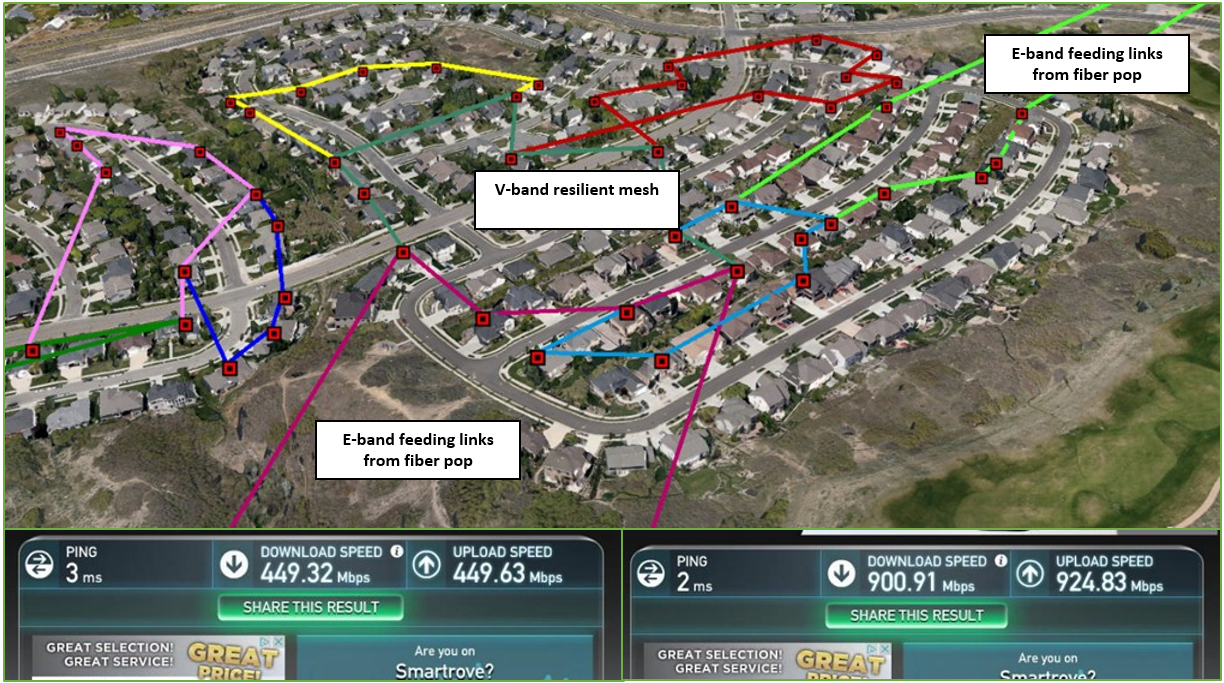
How does mmWave technology serve rural areas?
Both EtherHaul and MultiHaul radios can be used to provide multi gigabit connectivity to rural and distant areas. OverBuild is an extended range solution for service providers operating over long distances, delivering 10 Gbps to a distance of 7 miles / 13 kilometres.
How does it work? By combining a Siklu EtherHaul series radio, and any secondary wireless link, be it sub-6 GHz or licensed microwave, and Siklu’s powerful networking engine. With a single click, you can turn the two radios into an extended link solution that delivers the capacity you need over the distance you require.
How is the alignment performed?
For the EtherHaul PtP products the alignment process takes less than 15 minutes following a short training or even just by watching our on-line installation videos. Each unit is equipped with a simple optical alignment tool that helps perform the coarse alignment. The radio uses a proprietary digital signal processing algorithm which significantly increases the sensitivity. The system will enter this mode after a volt meter is connected to a dedicated port. The volt meter will display the actual RSSI value. Only standard tools are required for the installation and alignment procedure.
For our PtMP MultiHaul systems no manual alignment is needed, rather the system supports auto alignment. Both the BU and TU have active beam steering which can align the unit within a 90-degree sector.
How many units can I co-locate on the same rooftop?
Due to the extremely high spatial separation of the millimetre wave frequencies, plenty of available radio channels and compact form factor, there is virtually no practical limitation on the number of collocated units for either EH or MH systems.






